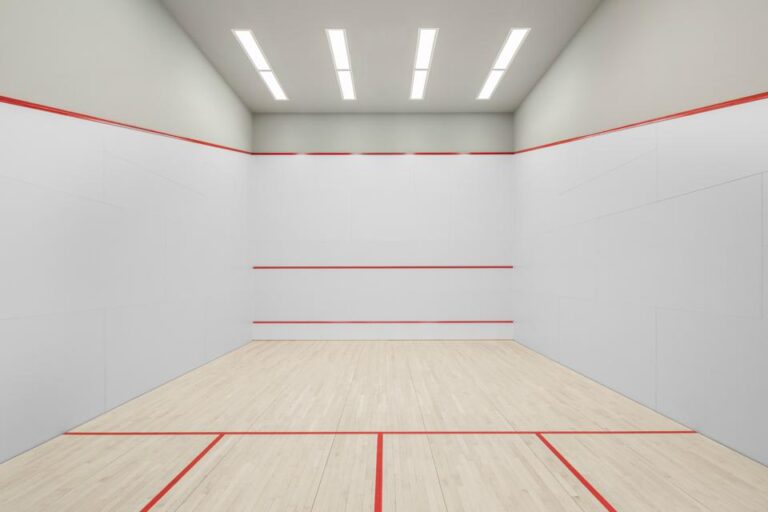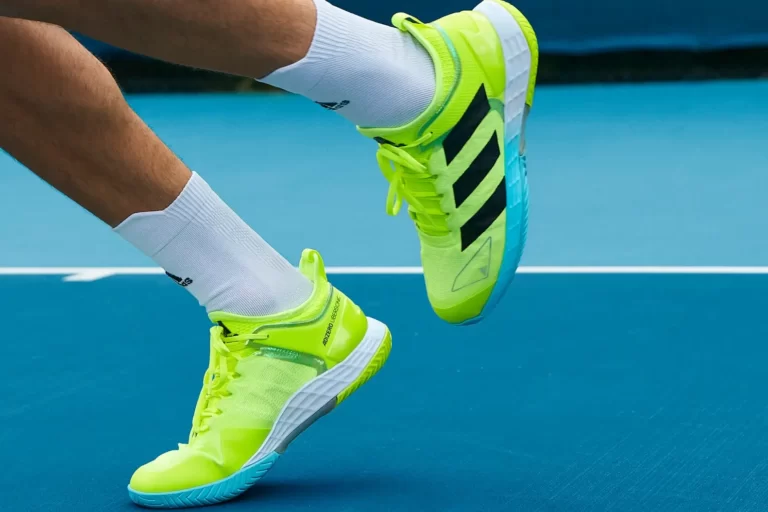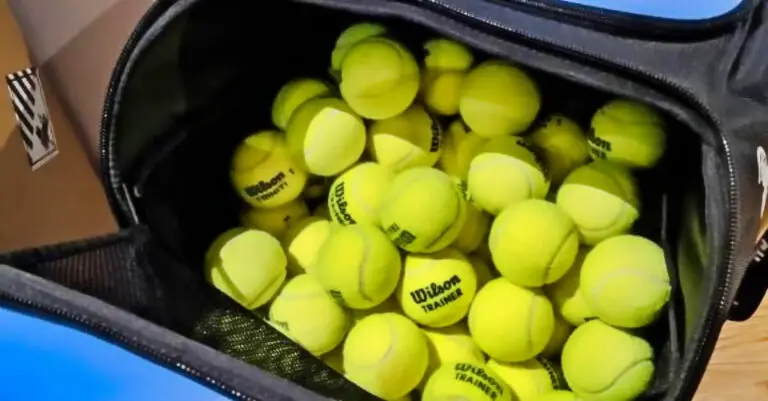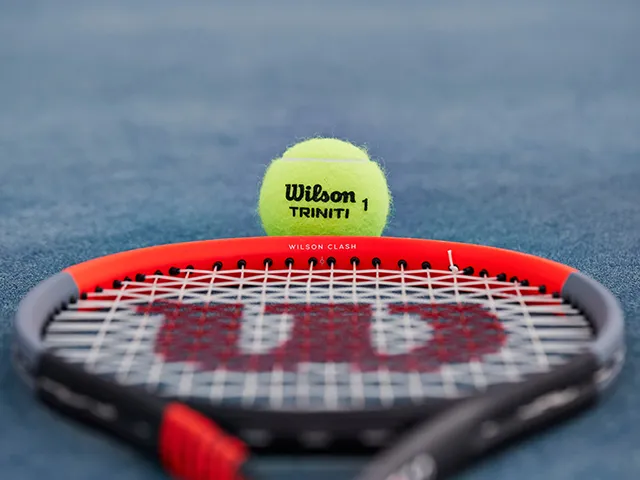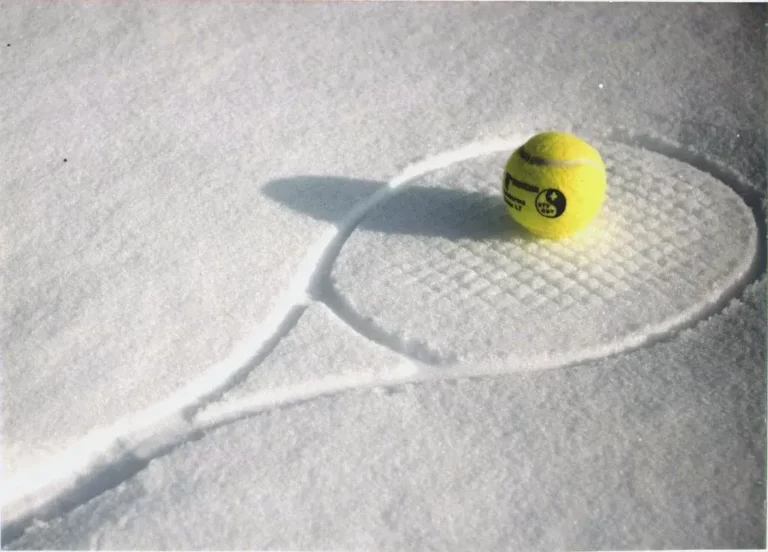What Does Icing Mean In Tennis?
In tennis, “icing” is the act of purposefully stopping play so that a player or team can regain composure and improve performance. It involves hitting a spectacular shot or serving an ace, typically during a crucial match moment. The goal of icing is to put the opposing team under strain and win the game.
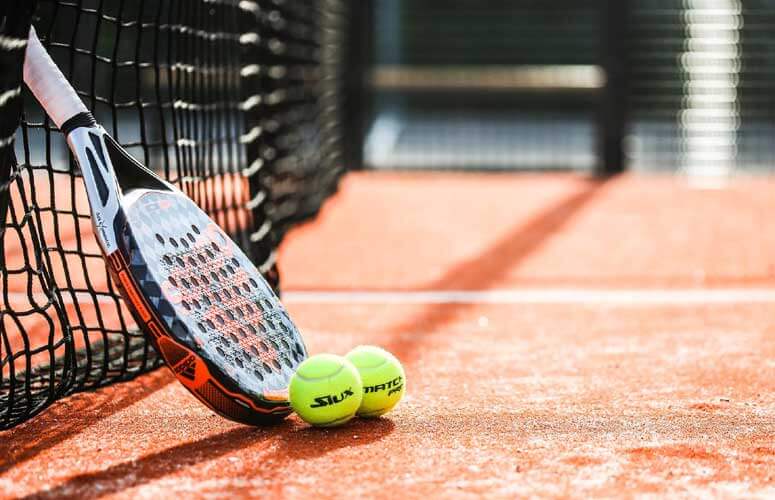
Tennis players must abide by several conditions and restrictions to compete successfully. One such term is “icing.” You’ve come to the perfect place if you’re new to the game or want to know what it signifies.
This article will discuss the meaning of icing in tennis, its significance, and how it impacts a player’s performance on the court.
If you want to increase your tennis knowledge, whether a novice or an expert, read on to discover more about icing.
The term “tennis icing” is defined in further detail below:

Definition of Icing:
In tennis, icing is a strategy to stop the opponent’s momentum and take the lead. A “time out” or “medical timeout,” which are breaks in play acknowledged by the referee, is not the same. As the game proceeds, a player can use icing as a tactical move.
Purpose of Icing:
The main goal of icing is to stop the opponent’s momentum and flow. Players attempt to win a point at a crucial moment by applying pressure on their opponent and gaining an advantage with a good serve or stroke.
Timing and Execution:
For icing, timing, and execution must be perfect. Players must carefully monitor their opponent’s strokes and anticipate their next move. Players that frequently make a powerful, accurate shot that is hard to return can use the icing strategy to their advantage.
Use of Icing:
Players can utilize ice at any moment throughout the game if they follow all applicable guidelines. It’s vital to understand that icing differs from taking a formal stoppage during play, such as calling for a timeout or medical timeout.
Rules and Regulations:
In both professional and amateur tennis matches, there are particular guidelines and rules surrounding the usage of icing.
Players must follow these guidelines to ensure fair play and sportsmanship. Some rules may prohibit the use of ice if doing so would cause the game to be delayed or would be viewed negatively by the umpire.
Impact on the Match:
Ice can interfere with an opponent’s rhythm, self-assurance, and focus when done correctly. It can cause a change in momentum and swing a game in the direction of the player employing the tactic.
Factors That Can Affect A Player’s Ability To Use Icing

Timing and Execution:
Tennis icing’s effectiveness is based on when it is used and how well it is carried out. Players must evaluate the game’s circumstances and pick the appropriate moment to employ icing efficiently.
At a pivotal stage in the game, serving an ace or scoring a point with a strong shot is essential to stop the opponent’s momentum and break their rhythm.
Skill Level:
A player’s ability to apply icing in tennis might vary depending on their skill level. Delivering an ace or making a strong shot takes technical mastery and constant practice. Successful icing is more likely to occur when players are more skilled.
Confidence:
Their confidence level significantly influences the effectiveness of a player’s use of icing. Players are more likely to execute icing well if they are certain of their skills and strongly believe in their approach. Confident players can manage stressful circumstances and take risks when the game is on the line.
Knowledge of Opponent:
To use icing effectively, one must be aware of the flaws and playing styles of the opposition. Players must examine their opponent’s game to pinpoint the key moments where icing can make the biggest difference. Players might improve their chances of icing by focusing on the opponent’s weak points.
Match Situation:
The game’s present state can influence a player’s decision to employ icing. Variables, including the score, set point, game point, or tie-break circumstances, may influence a player’s decision to use icing. Evaluating the game’s circumstances is important to see if icing will give you a tactical advantage.
Mental and Physical Fatigue:
The capacity of a player to perform icing effectively might be impacted by physical and mental exhaustion.
A player’s performance may be impaired if they are physically or psychologically worn out, making it more difficult to serve a strong shot or win an important point. Players must control their energy levels during the game to maximize their capacity to employ icing.
Rules and Regulations:
Players are required to abide by the guidelines for icing tennis balls. Tennis governing bodies or event directors may have established specific rules on when and how icing can be used. Penalties or repercussions may apply if you break these regulations.
Court Surface and Conditions:

The court surface and weather can influence the ability of a player to use icing efficiently. The variations in ball speeds and bounces on various court surfaces (like grass, clay, and hard court) can affect the success rate of icing.
Additionally, adverse weather conditions like wind or intense heat may impact players’ ability to make shots and overall strategy.
Player’s Physical Condition:
A player’s capacity to execute icing can be influenced by their physical state, which includes elements like fitness level, injury status, and weariness.
It can be difficult to employ icing effectively when a player’s physical limitations or discomfort make it difficult to serve powerfully or move quickly on the court.
Tactical Adaptation:
Players must adjust their tactics depending on how well icing works during a game. Players may need to modify their strategy and look at alternative techniques if the opposition is robust to icing or routinely returns strong shots.
Benefits Of Using Icing In Tennis

In tennis, icing is a tactic players employ to gain an advantage over their rivals by messing with their timing and rhythm.
It entails intentionally putting serves outside the service box to force the opponent to move rapidly and make contact with the ball while off balance. Unforced blunders may come from this, giving the serving player a critical point.
The advantages of icing in tennis are as follows:
Disrupting Opponent’s Rhythm:
One of icing’s main advantages is that it can assist in breaking up an opponent’s rhythm. Using icing techniques to introduce surprising variables into the game might cause your opponent to lose focus and make errors.
Changing Momentum:
You can utilize icing to alter a match’s momentum. Using icing can change the game’s nature and the momentum in your favor if you have been struggling with an opponent’s style or losing points.
Shifting Court Positioning:
Players can change the court placement by carefully putting serves outside the service box. This can open up new shooting angles or present chances to take advantage of the deficiencies of the opposition.
Controlling Tempo:
Players can regulate the pace of the game through the icing. Players can control the game’s tempo by altering the speed and placement of their serves. This keeps their opponents off balance and makes predicting and reacting to shots more difficult.
Putting Pressure on Opponent:
Icing significantly increases the strain on the adversary, particularly during match-defining moments. Players can elicit a sense of urgency and put their opponents under pressure by serving aces or making strong shots to win points.
Gaining Psychological Advantage:
Icing strategically gives you a psychological advantage. Players can throw off their opponent’s routine and make them adjust to unexpected serves, which can throw off their confidence and decision-making.
Creating Unforced Errors:
Icing makes it more likely for opponents to commit unintentional mistakes. Players may struggle with precision and consistency when required to make tough shots while off balance, which can lead to errors and favor the serving player.
Professional Examples:
In professional matches, there have been countless instances of successful icings. Serena Williams, Roger Federer, and Novak Djokovic are just a few athletes who have used icing strategies to disturb opponents and win games.
How to Avoid an “Icing” Violation during your serve?
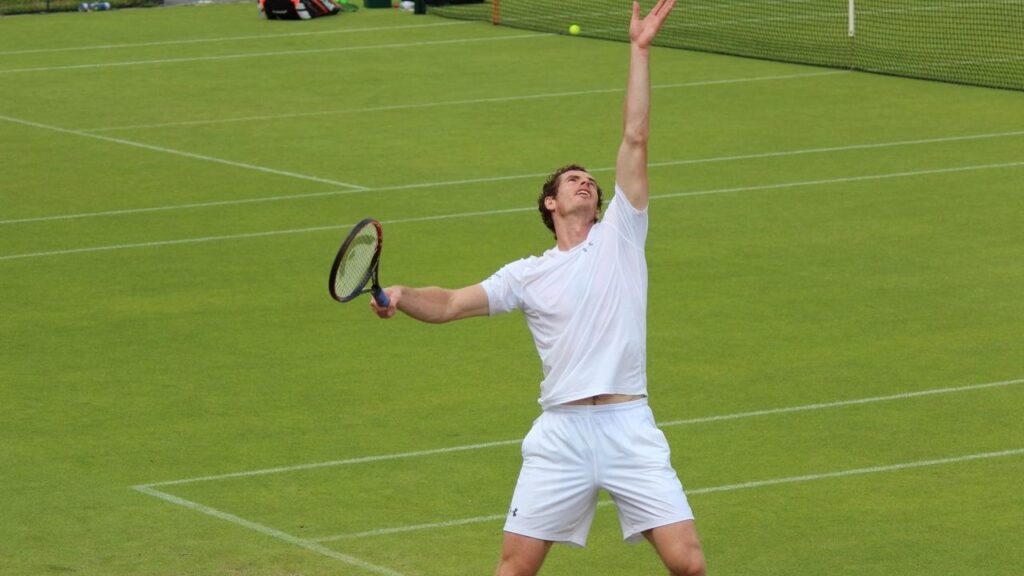
Tennis players can use the following advice to prevent an “icing” infraction while serving:
Develop a consistent serving technique:
Regular practice will help you to hone a reliable technique that works for you. By doing this, you’ll be able to serve more precisely and prevent errors that could result in a double fault.
Focus on your footwork:
For a serve to be effective, proper footwork is necessary. Before serving, ensure you’re in the right stance, and keep your balance through. You can increase the strength and precision of your server by doing this.
Pay attention to your ball toss:
Your ball toss needs to be accurate and consistent. Toss the ball consistently and at the appropriate height to ensure a comfortable and efficient swing.
Stay mentally focused:
Maintaining confidence and mental focus is crucial because serving under pressure can be difficult. Breathe deeply, picture winning serves in your head, and maintain your composure. This will lessen the likelihood of breaking the icing rules.
Use strategic serving tactics:
Identify your opponent’s weak points and serve to those parts of the court where they are most vulnerable. To throw off your opponent and improve your chances of a good serve, vary the location and speed of your serves.
In conclusion:
Tennis players must concentrate on perfecting their serving technique, maintaining good footwork, paying attention to their ball throw, remaining mentally focused, and adopting strategic serving strategies to prevent an “icing” violation during their serve.
By adhering to these recommendations, you can improve your serving abilities, decrease errors, and raise your chances of a successful serve in tennis.
Keep working on these strategies and putting them into practice to enhance your overall performance and prevent losing points because of icing breaches.
REFERENCES:
- https://clayherz.com/what-does-icing-mean-in-tennis/
- https://tennisuniverse.org/what-does-icing-mean/
- https://ironracket.com/tennis/what-is-icing-in-tennis/
- https://clayherz.com/what-does-icing-mean-in-tennis/
Related Posts
When Is A Ball Out In Tennis? ( IMP FAQs Answered )
What Is A Net Ball In Tennis? ( A Detailed Guide )
Why Do Tennis Players Wear Wristbands?
Why Are Tennis Balls Sealed? ( The Key Reasons )
How Many Tennis Lessons Do I Need? ( About Your Learning Curve )

